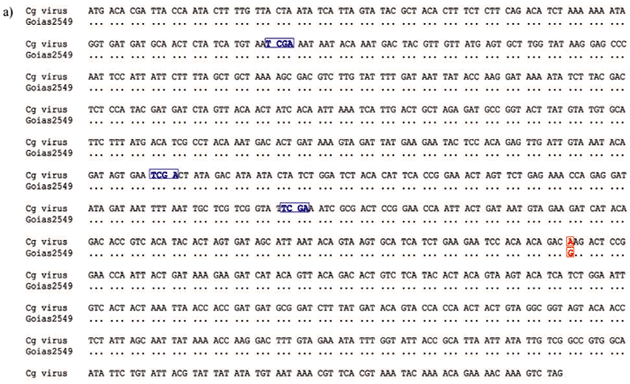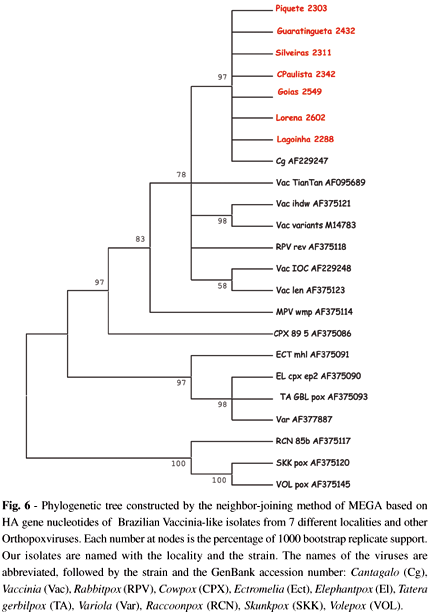Since October 2001, the Adolfo Lutz Institute has been receiving vesicular fluids and scab specimens of patients from Paraíba Valley region in the São Paulo and Minas Gerais States and from São Patricio Valley, in the Goiás State. Epidemiological data suggested that the outbreaks were caused by Cowpox virus or Vaccinia virus. Most of the patients are dairy milkers that had vesiculo-pustular lesions on the hands, arms, forearms, and some of them, on the face. Virus particles with orthopoxvirus morphology were detected by direct electron microscopy (DEM) in samples of 49 (66.21%) patients of a total of 74 analyzed. Viruses were isolated in Vero cell culture and on chorioallantoic membrane (CAM) of embryonated chicken eggs. Among 21 samples submitted to PCR using primers for hemagglutinin (HA) gene, 19 were positive. Restriction digestion with TaqI resulted in four characteristic Vaccinia virus fragments. HA nucleotide sequences showed 99.9% similarity with Cantagalo virus, described as a strain of Vaccinia virus. The only difference observed was the substitution of one nucleotide in the position 616 leading to change in one amino acid of the protein in the position 206. The phylogenetic analysis showed that the isolates clustered together with Cantagalo virus, other Vaccinia strains and Rabbitpox virus.
Vaccinia-like virus; Outbreak; Diagnosis; Electron microscopy; Virus isolation; PCR; Sequencing; Phylogenetic analysis










